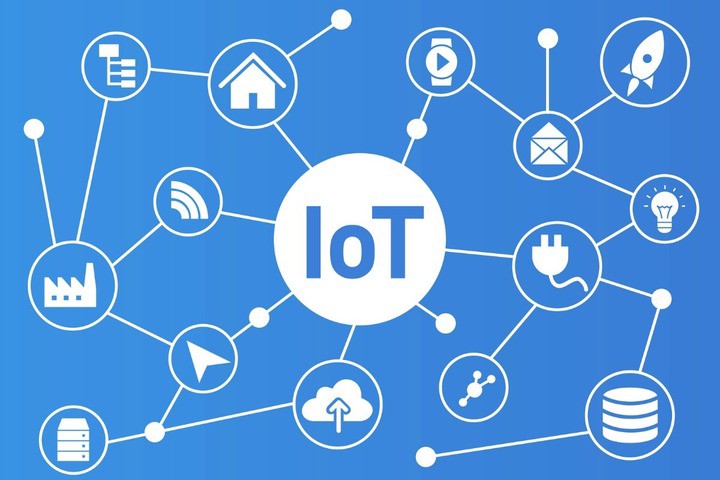
A network of physical objects known as the Internet of Things (IoT) connects to and exchanges data with other entities and services across a network, be it the Internet or another. The Internet can be used to secure anything that can be implanted with the required sensors and software. Currently, more than ten billion linked devices are in use worldwide, and this number keeps growing.
An IoT application and connected devices use the managed Azure IoT Hub service, which is hosted in the cloud and serves as a central messaging hub. An IoT hub can be connected to almost any device. Millions of devices and their backend programs can be securely and reliably connected.
Overview
Device-to-cloud telemetry, file uploading from devices, and request-reply techniques to control your devices from the cloud are just a few of the messaging patterns supported. You can track devices’ creation, connections, and failures with the aid of monitoring, which IoT Hub supports.
To serve your IoT workloads, IoT Hub expands to millions of devices connected simultaneously and millions of events per second. See IoT Hub scaling for more details on scaling your IoT Hub. IoT Hub can be integrated with other Azure services to create comprehensive, all-encompassing solutions. For example, use:
- With the help of Azure Event Grid, your company will be able to respond to urgent situations in a dependable, scalable, and secure way.
- To automate business operations, use Azure Logic Apps.
- To count machine learning and AI samples to your resolution, use Azure Machine Learning.
- To do real-time analytical computations on the data streaming from your devices, use Azure Stream Analytics.
IoT Central applications utilize multiple IoT hubs as their scalable and resilient infrastructure. To prevent service misuse, default quota restrictions are set for each Azure subscription. These restrictions might impact the scope of your IoT solution. 50 IoT hubs are currently the maximum allowed per subscription.
The Internet of Things azure messaging protocol is an OASIS standard (IoT). MQTT is an essential and practical IoT protocol. MQTT is intended to connect remote devices with a tiny code footprint and low network bandwidth by acting as an incredibly lightweight publish/subscribe messaging transport. Today, many industries use MQTT, including automotive, manufacturing, telecommunications, oil and gas, and e-commerce. MQTT is a protocol that enables a publish and subscribe strategy to link several devices or sensors quickly. Thus you may use it for the Internet of Things as well. Any of the following options can be used by a device to connect to an IoT hub Azure.
Why is Azure IoT hub important?
The Internet of Things is growing rapidly, and time is drawing near when connectivity will be expected in every device. While this might seem strange, connected toilets will be the norm in intelligent homes worldwide in five to ten years. Millions of IoT devices and a backend hosted in the cloud can communicate reliably and securely thanks to Azure IoT Hubs. IoT Hub keeps track of events, including developing new devices, device failures, and device connections. IoT Hub supports a variety of messaging patterns, including device-to-cloud telemetry, device-to-device file upload, and request-reply techniques for cloud device control.
Thanks to the Internet of Things Hub, your devices can send data through a secure communication channel. Per-device authentication ensures that every connection to the IoT hub and every management of devices are safe. Access to devices is entirely under your control, and you can manage relationships on a per-device basis.
Azure IoT hub backend services
The backend service in an IoT solution offers features like:
- Decide how to handle and store large amounts of telemetry your devices send.
- Telemetry analysis to provide insights, either immediately or afterward.
- Sending instructions to a particular gadget from the cloud.
- Managing which devices can connect to your infrastructure and provisioning devices.
- Controlling the condition of your equipment and keeping an eye on its usage.
- Take control of the gadget firmware you have loaded.
For instance, the cloud back end in a remote monitoring solution for an oil pumping station analyzes telemetry from the pumps to spot unusual behavior. A command to take corrective action can be automatically sent back to the device by the backend service when it discovers an anomaly.
With the help of other Azure services, IoT Hub enables you to maximize the value of your device data so that you may go from reactive management to predictive problem-solving. Secure your IoT hub with different Azure services for machine learning, analytics, and AI to act on real-time data, optimize processing, and acquire more profound insights.
Conclusion
A physical device network that links to and interacts with data with other things and services is called Internet of Things (IoT). Globally, there are more than 10 billion linked devices in operation, which is constantly increasing. Millions of connected devices can safely communicate with a cloud-hosted backend using Azure IoT Hub. Per-device authentication ensures the security of every administration of devices and connects to the IoT hub. IoT Hub enables you to enhance the value of your device data with the aid of other Azure services.
Additionally, you can use akenza.io, a self-service IoT platform that enables you to develop profitable Azure IoT Hub products and services. It connects, controls, and keeps track of Internet of Things devices in a single area. By drastically reducing the workload and complexity that enterprises must deal with while implementing IoT solutions, Akenza.io is confident.





